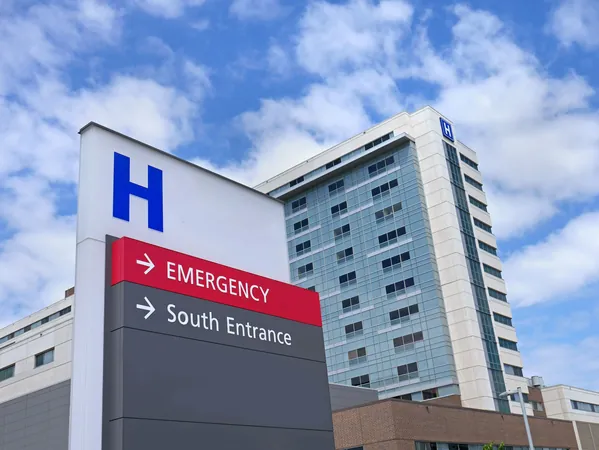
How Hospital Type Affects Antifibrotic Treatment Rates in Patients with IPF: New Insights Revealed!
2024-11-27
Author: Daniel
Introduction
A recent study published in *Respiratory Investigation* has shed light on the differences in antifibrotic treatment rates among patients diagnosed with idiopathic pulmonary fibrosis (IPF) based on the type of medical facility they attend. This research highlights a concerning trend that suggests a significant number of patients are not receiving crucial treatments even when they are eligible.
Background
In 2015, clinical guidelines recommended two key antifibrotic medications, pirfenidone and nintedanib, for the treatment of IPF. Clinical trials have confirmed that these drugs can substantially slow the disease's progression, making them vital for managing this debilitating condition. Despite the benefits, a staggering 54% of patients surveyed by respiratory physicians across Europe were found to be untreated.
Study Overview
In Japan, researchers conducted an extensive survey involving general practitioners and respiratory physicians. They sought to understand the landscape of untreated IPF patients and the reasons behind the lack of intervention. The study was carried out at 23 medical facilities in Yamaguchi, Japan, over a span of nearly one year, targeting patients diagnosed with IPF.
Patient Demographics
Out of 518 patients with interstitial lung disease (ILD), 207 were specifically diagnosed with IPF. Notably, 168 of those had a good performance status (PS) indicating that they were likely candidates for treatment. The demographics revealed a mean age of 76.5 years, primarily comprising male patients (72.6%). Treatment was more common in general hospitals, with 74% of treated patients receiving care there.
Treatment Rates
A mere 22.6% of patients with IPF were prescribed antifibrotic therapy. The analysis revealed a significant difference in treatment rates based on the type of facility. Hospitals categorized as referral centers demonstrated a higher rate of antifibrotic prescriptions compared to general hospitals or clinics.
Barriers to Treatment
Furthermore, reasons for not prescribing treatment varied little between hospitals, with many physicians citing mild symptoms or imaging results as barriers to treatment initiation.
Duration to Treatment
Interestingly, the time taken for patients to transition from diagnosis to treatment also varied, with no significant disparity between referral hospitals and general hospitals—averaging 24.5 months and 35.5 months, respectively.
Performance Status Correlation
The researchers noted that poorer PS and more severe symptoms—as measured by the modified Medical Research Council (mMRC) scale—correlated with higher treatment rates, especially in general hospitals. However, the review found that symptom severity was not a key consideration in referral hospitals when determining treatment.
Study Limitations
Despite some positive findings, the researchers acknowledged limitations in their study. Focusing solely on rural regions of Japan may render the results less applicable to urban settings, and the insights gained from this demographic may not transfer well to international patient populations.
Conclusion
In conclusion, the study underscores the pressing need for improved awareness and education regarding antifibrotic therapy, particularly for patients with mild presentations of IPF. Enhanced collaboration between general and specialized hospitals is also imperative to ensure that all eligible patients receive the necessary treatments.
Call to Action
As researchers continue to explore the intricacies of IPF management, these findings serve as a critical call to action for healthcare systems worldwide to prioritize patient care over institutional barriers. This raises an important question: Are we doing enough to ensure that every patient with IPF gets the treatment they deserve?
 Brasil (PT)
Brasil (PT)
 Canada (EN)
Canada (EN)
 Chile (ES)
Chile (ES)
 Česko (CS)
Česko (CS)
 대한민국 (KO)
대한민국 (KO)
 España (ES)
España (ES)
 France (FR)
France (FR)
 Hong Kong (EN)
Hong Kong (EN)
 Italia (IT)
Italia (IT)
 日本 (JA)
日本 (JA)
 Magyarország (HU)
Magyarország (HU)
 Norge (NO)
Norge (NO)
 Polska (PL)
Polska (PL)
 Schweiz (DE)
Schweiz (DE)
 Singapore (EN)
Singapore (EN)
 Sverige (SV)
Sverige (SV)
 Suomi (FI)
Suomi (FI)
 Türkiye (TR)
Türkiye (TR)
 الإمارات العربية المتحدة (AR)
الإمارات العربية المتحدة (AR)